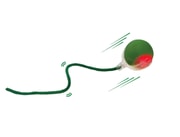The Best Bread For Your Health (And Your Wallet)
- Replies 12
Bread has long been a staple in many Aussie households. It's rich in carbohydrates and low in fat, and wholegrain varieties are abundant in protein, fibre, vitamins and minerals, as well as healthy fats.
And because there is so much variety at your local grocery store, choosing the right type of bread for your health can be difficult.
Wholemeal, multigrain, sourdough, rye, white, high fibre white, low GI, gluten-free – with so many bread options, how do we know which is best for our health (and our wallet)?
According to nutritionist Jaime Rose Chambers, bread doesn’t deserve its bad reputation.
In addition to it being practical, economical, and accessible to many, bread can be incorporated into a healthy diet as long as it is of high quality and consumed in the appropriate quantities.
Almost 40% of Aussies eat bread daily. Credit: PxHere.
Ms Chambers suggests checking the ingredient list for the presence of whole grain and ensuring that the product has all three components of the grain.
But if you don't like whole grains or any grains for that matter, wholemeal wheat flour is the next best option — the darker the colour, the better for you.
"The bread should look dark brown and dense with seeds and grains. That's ultimately what we're looking for, a bread like that is going to be highly nutritious," she said.
Canstar Blue conducted a survey among consumers to learn more about their preferences regarding the taste, freshness, and overall value of their bread.
The white bread at Woolworths and the wholemeal and multi-grain bread at Coles were both considered to be the greatest value for your money.
Wonder White, Wonder Wholemeal, and Coles Wholegrain all received high marks across the board for their quality as well, and were considered the best overall among the ones available in supermarkets.
A Canstar Blue poll named Wonder White, Wonder Wholemeal, and Coles Multi-grain as the best loaves of bread. Credit: Today.
Not all pieces of bread are created equal. Ideally, you should look for heavy, dense types of bread with lots of grains and seeds.
Because the lists of ingredients that appear on food labels are written in descending order, you should look for words such as "whole grain," "kibbled grain," "nuts and seeds," and so on, near the beginning of the list.
According to the Australian Food Standards Code, an item is regarded to be a good source of fibre if it contains more than 4g of fibre per serving.
Another type of bread that is becoming increasingly more popular is gluten-free bread, with many shoppers admitting that they buy it even if they do not have gluten intolerance.
However, those who eat it because they believe it is good for them could be paying more for a health myth, according to experts.
Choosing gluten-free bread over wheat-based bread is not inherently more nutritious. Furthermore, they are usually more expensive and have a shorter shelf life.
Instead, go for wholegrain, wholegrain rye or authentic sourdough bread (particularly rye or grain sourdough). The soft fluffy white bread is best left for the occasional Bunnings sausage sizzle or for making sprinkle-filled fairy bread for the grandkids.
We wish bread shopping success to all of you, members!







